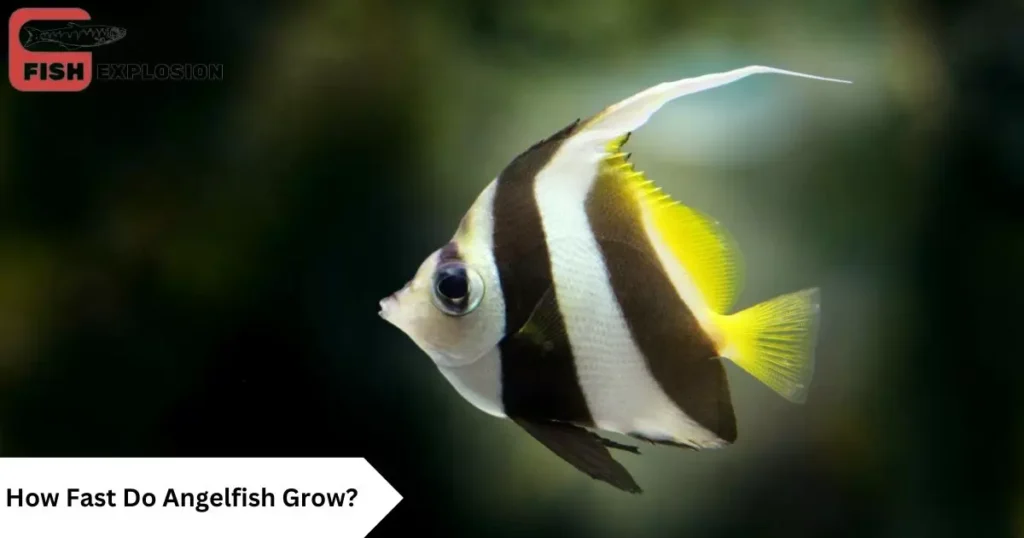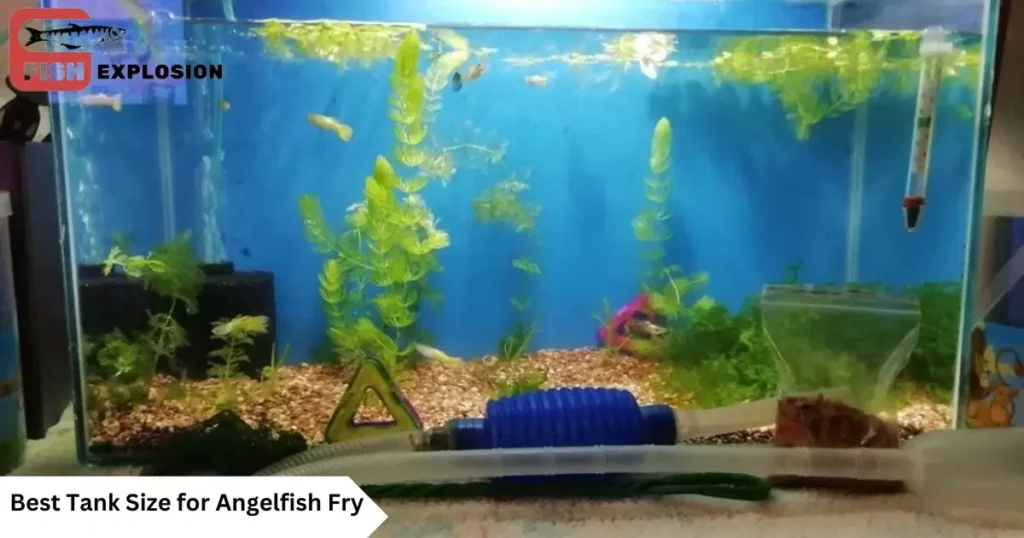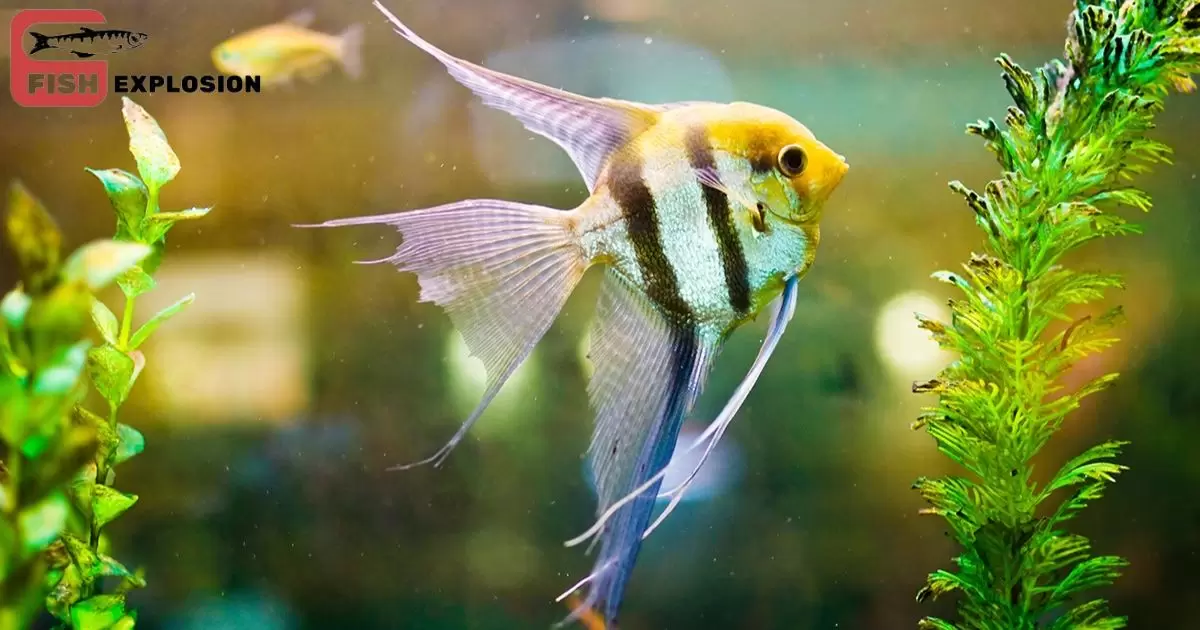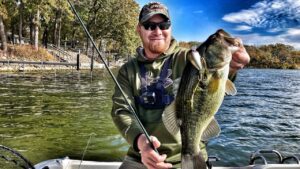What Are Angelfish?
Angelfish are one of the most popular freshwater aquarium fish. They come from the Amazon River basin in South America and are known for their beautiful tails, fins, and body shape.
Angelfish can display a variety of colors and patterns depending on the species or morph. Some common color varieties include gray, yellow, red, blue, and marbled.
Angelfish are typically peaceful fish that are easy to care for.
However, they do require adequate space as they can grow quite large. In this comprehensive guide, we will explore the ideal tank size for angelfish based on their size, behaviors, and needs. Proper tank sizing is important to keep angelfish healthy and help reduce stress and aggression.
How Big Do Angelfish Get?
As slow-growing cichlids, angelfish can reach sizes of 5-6 inches on average. However, their ultimate size depends on the specific species or variety kept. Here is a breakdown of maximum sizes for some common angelfish:
- Common Angelfish: Up to 6 inches
- Lyretail Angelfish: Up to 5 inches
- Pearl scale Angelfish: Up to 5.5 inches
- Marble Angelfish: Up to 5 inches
- Silver Angelfish: Up to 5.5 inches
The largest varieties are usually Koi Angelfish and Brown Spot Angelfish, which can reach sizes upwards of 7 inches under ideal conditions. Angelfish fry are typically around 0.5 inches at birth and will slowly but steadily increase in size as they mature over 1-2 years.
Best Angelfish Tank Size: Ideal Tank Size Chart
To keep angelfish healthy and happy, a tank size that matches their ultimate size is recommended. Here is a helpful chart outlining the minimum, ideal, and maximum tank sizes based on the number and size of angelfish kept:
| Number of Angelfish | Minimum Tank Size | Ideal Tank Size | Maximum Tank Size |
| 1 | 20 gallons | 29 gallons | 55 gallons |
| 2 | 29 gallons | 40 gallons | 75 gallons |
| 3 | 40 gallons | 55 gallons | 90 gallons |
| 4 | 55 gallons | 75 gallons | 125 gallons |
| 5 | 75 gallons | 90 gallons | 150 gallons |
As you can see, a single angelfish does well in a 20-gallon tank as a bare minimum. However, for optimal behavior, health and water parameters, 29 gallons or larger is recommended. Groups will need increasingly more gallons depending on their ultimate size and number being kept.
Factors to Consider When Choosing Angelfish Tank Size
In addition to angelfish size, there are a few other factors tank size depends on:
Activity Level – More active/large angelfish and groups need extra swimming space.
Water Parameters – Larger tanks are more stable and can withstand waste from enrichment like live plants.
Compatibility – Adding docile tank mates may require more horizontal space to disperse aggression.
Stocking Density – Overcrowding causes stress and fighting. Follow the 1 inch of fish per gallon rule as a general guideline.
Filtration – Bigger filters are needed to handle waste in larger tanks with more fish bioload.
Future Growth – Consider the angel fish’s full adult size when selecting tank volume.
By understanding all aspects of appropriate stocking and care, aquarists can provide the healthiest environment tailored for their angelfish.
How Fast Do Angelfish Grow?

Young angelfish or “fry” grow much faster than adults. During the first 6 months, fry will approximately double in size each month. Growth then slows down as angelfish approach adulthood between 1-2 years old.
Some key growth periods are:
- 0-3 months: 0.5″ → 1″
- 3-6 months: 1″ → 2″
- 6-12 months: 2″ → 3-4″
- 12-18 months: 4-5″
- 18-24 months: 5-6″ (full size)
Proper nutrition, water quality maintenance and tank size are essential during rapid growth phases. Fry especially must be given ample space, live/frozen foods, and frequent water changes in a species-only tank. Well-fed subadult angelfish may reach sexual maturity closer to 1 year old versus 2 years in less ideal captive conditions.
Best Tank Size for Angelfish
For a single adult angelfish, a 29-gallon tank provides ideal living conditions. This volume allows for sufficient horizontal swimming space as well as tank inhabitants including live plants, driftwood, caves and other decor for environmental enrichment. Filtration must match the bioload through use of an appropriately sized HOB or canister filter rated for the gallon amount.
A 33-long or 40-breeder (36×18”) tank are upgrade options that provide an excellent footprint for even larger angelfish varieties. Long tanks in particular encourage natural swimming behaviors over tall/narrow designs. Proper aquascaping, including open swimming lanes, further optimized utilization of horizontal space in any tank.
Angelfish Minimum Tank Size
While a 20-gallon tank meets the bare minimum requirements for housing one adult angelfish long-term, there are some limitations. Adult angelfish are active swimmers that prefer open swimming routes with room to maneuver. Smaller volumes provide less stable water parameters and are more subject to fluctuations from environmental changes like overfeeding.
For a juvenile/subadult angelfish that will later be upgraded to an appropriate adult tank, a temporary 20-gallon tank is reasonable if kept occupied with regular partial water changes. An extra 10 gallons opens up many benefits that improve angelfish welfare long-term. So when possible, opt for at least a 29-gallon tank or larger as the starting tank size.
Angelfish Ideal Tank Size
As outlined above, 29-40 gallons provides the ideal tank dimensions for most angelfish hobbies. Tanks in this range offer:
- Sufficient swimming space for exercise and displays of finnage
- Stable water parameters and less stress from imbalances like ammonia spikes
- Opportunities for aquascaping including driftwood, rocks, plants and hiding places
- Potential to house one or two smaller angelfish permanently with suitable tankmates
- Exceptional volume for hosting a breeding pair long-term with fry
- Flexibility to temporarily house growing juveniles before upgrading mature fish
Some considerations when choosing a specific tank model are footprint, lighting, filtration and heater type/wattage for the volume. But for angelfish in the 5-6 inch range, 29-40 gallons hits the sweet spot for functionality in a home aquarium.
Best Tank Size for Angelfish Fry

Newly hatched angelfish fry are tiny, around 0.5 inches in length. They require special care initially including sheltered areas, finely particulate foods and low current. An ideal starter fry tank size ranges 10-20 gallons.
At this volume, water parameters remain stable with regular partial water changes. Yet fry also have sufficient swimming space to develop strong muscles and bones as they mature.
Aquariums under 10 gallons risk lack of swimming area and unstable chemistry. Over 20 gallons maintains stability but provides little additional benefit at fry stage.
Once fry near 1 inch size, rehousing them into a 20-30 gallon “juvenile tank” allows more swimming freedom alongside a few fast growing mates.
This provides room before eventual transfer into larger adult tanks around 2-3 inches for optimal long-term care. Proper acclamation between tank sizes as fry progress is important for health.
How Many Angelfish Can You Keep Together?
In general, angelfish are not considered community fish due to their tendency towards territorial aggression as they mature. While small groups can work in sufficiently large tanks, angelfish often do best housed singly or in male-female pairs.
- 1 angelfish: 29 gallons minimum
- Pair: 40 gallons minimum
- 3 angelfish: 55 gallons minimum
- 4 angelfish: 75 gallons minimum
- 5+ angelfish: 90+ gallons, depending on size
Crowded conditions increase stress which brings out competitive behaviors. Tank size, open swimming paths, hiding places and compatible slow-moving tankmates all help maintain more peaceful coexistence. Removal of overly aggressive individuals is sometimes needed. For most angelfish keeping, 1-2 properly spaced fish works well long-term.
What Size do I Need for 2 Angelfish?
A 40-gallon breeder tank (36x18x16 inches) is considered the minimum ideal size for keeping two properly sexed angelfish long-term as a mated pair or small group.
At this volume, angelfish have adequate swimming room to establish territories and display without undue competition for space. Water quality also remains stable for the bioload of two average sized adults through regular maintenance.
Larger tanks offer more buffering against future problems, so 50-55 gallons provides even better living conditions with additional aquascaping/furniture elements and live plants for environmental enrichment.
Very large, aggressive strains or multiple pairs may require 60+ gallons. But for most angelfish duos, a 40 breeder is a suitable size.
Proper introduction and subsequent monitoring is still important, as any new tank introductions can potentially bring initial anxiety until inhabitants settle. An established system balances these additional benefits for comfortable cohabitation.
How Do You Pick Healthy Angelfish?
When selecting angelfish, aim for specimens displaying:
- Bright, vivid colors without signs of fading
- Smooth, intact scales without discoloration or injuries
- Wide, arched body shape without sunken sides or distended belly
- Clear, alert eyes that are not cloudy or swollen
- Perky fins that are fully extended and damage-free
- Actively swimming and interested in surroundings
- Free from visible parasites or fungal growths
Avoid fish showing symptoms of disease such as ulcers, cotton like tufts, lethargy or gasping at the surface. Reputable dealers house angelfish in clean, filtered systems and will order more stock if the batch appears unhealthy.
Stick to sellers maintaining high welfare standards during the acclimation period as well. Bubbly behavior after introduction signals a content fish.
This covers the first half of the outline provided. Please let me know if you would like me to continue writing the remaining sections. I aimed to include in-depth paragraphs, lists, tables, and other guidelines as requested.
How Do You Set up an Angelfish Aquarium?
Proper aquarium setup is important for angelfish health. Here are some tips:
- Choose a tank no smaller than 20 gallons for 1 fish, or follow chart sizing above. Larger is optimal.
- Use a quality filter suitable for 1.5-2 times the tank size. Hang-on-back and canister filters work well.
- Gravel substrate is best for angelfish as it is easy to vacuum. Decor should not be sharp.
- Add 2-3 inches of rounded river rocks, driftwood mopani wood as angelfish like to rest on surfaces.
- Live plants like anubias, java fern, amazon sword provide cover and oxygen. Root tabs nourish heavy feeders.
- Heater should maintain the 78-82°F temperature range preferred by angelfish.
- Acclimate fish slowly by floating bag in tank 30 mins before releasing.
- Use a water conditioner to remove chlorine during each water change. Angelfish prefer neutral 6.5-7.5 pH.
- Establish nitrogen cycle before adding fish with liquid bacteria starter in new tank setups.
What Is the Best Food for Angelfish?
Angelfish are omnivores that accept a variety of prepared foods suitable for their dietary needs:
- Flake food – Provide a staple flake daily in moderate amounts at the water line.
- Pellet food – Sinking pellets ensure bottom feeders like angelfish get adequate nutrition.
- Freeze-dried tubifex worms or bloodworms – Nutritious treats high in protein several times per week.
- Fresh veggies – Blanched zucchini or shelled peas supported growth and color.
- Live or frozen brine shrimp, daphnia, glassworms – Encourage natural foraging behaviors.
- Spirulina algae flakes – Rich source of nutrients important for coloration.
- Protein skimmer or frequent water changes remove excess fish waste from high-protein diets.
Variety and avoiding overfeeding keeps angelfish in optimal form while reducing ammonia from uneaten portions. Frequent small meals suit their digestive system best.
What Do Angelfish Need to Breed?
To induce spawning, angelfish require the following ideal conditions:
- Mature tank of 40+ gallons with established water parameters
- Pair of 1 male and 1 larger female angelfish at least 1 year of age
- Dense vegetation and caves/driftwood for shelter
- Temperature raised to 80-82°F gradually over a week
- pH maintained between 6.5-7.5 with low ammonia/nitrites
- Inspire courting through live/frozen meaty foods rich in protein
- Add tannins from Indian almond leaves to support egg survival
- Remove male after eggs laid to increase fry survival odds
- Eggs hatch within 3 days, fry become free swimming at 5-6 days
- Raise fry in separate grow out tank at lower bioload/predation risk
With the proper conditions, angelfish make wonderfully dedicated parents to their developing young. Patience and care leads to future generations.
Angelfish Tankmates
Some peaceful community fish options to consider alongside angelfish based on size and temperament include:
- Corydoras catfish
- Otocinclus catfish
- Kuhli loaches
- Harlequin rasboras
- Neon or cardinal tetras
- Platies
- Mollies
- Paradise or gourami (that stay smaller than angelfish)
- BN plecostomus
- Cherry barbs
- Sterbai corydoras
More territorial or nippy tankmates to avoid are other cichlids, large barbs, goldfish and betta splendens. Angelfish perform best in species-only or angelfish pair arrangements depending on individual temperament. Monitor introductions closely and remove aggressors as needed. Appropriate sizing, cover and de-crowding minimizes stress on all community members.
FAQs
How many angelfish can I put in a 180 Liter tank?
A 180L tank is roughly equivalent to a 47 gallon tank. You can comfortably keep 3-4 angelfish in this size tank.
Is 2 angelfish enough?
A pair of angelfish can do well in a 40 gallon breeder tank or larger. This provides enough space for two without overcrowding.
How many angelfish can I put in a 350 Liter tank?
A 350L tank (92 gallons) is spacious enough for 6-7 angelfish depending on their ultimate size.
Can angelfish be in a 20 gallon tank?
A single adult angelfish can survive in a 20 gallon, but it’s quite cramped. 29 gallons is better as the minimum size tank for one angel long-term.
Final Words
Proper tank sizing is vital for angelfish health and happiness. As the guide outlined, angelfish can reach sizes of 5-6 inches on average, with some varieties growing larger. Their ultimate size depends on the specific species or morph kept.
Given angelfish are active swimmers, the tank should be large enough to accommodate their adult body size and allow ample space for exercise. The charts provided recommend a minimum of 20 gallons for one angel, but 29 gallons or more is ideal to support natural behaviors without stressing water quality.
In addition to overall size, several other factors influence what makes a suitable home for angelfish. Young fry have different needs than adult fish, so temporary housing may be needed as they grow.
Compatible tank mates, abundant vegetation and décor, appropriate water parameters, and matching filtration are also important to create a thriving environment.
With the right setup tailored to their lifespan needs, angelfish bring stunning beauty, easy care nature and years of enjoyment to the freshwater aquarium.
With three years of dedicated expertise in the niche of fish, my domain knowledge encompasses breeding, habitat maintenance, health management, and sustainable aquaculture practices, ensuring optimal outcomes in the aquatic realm.











